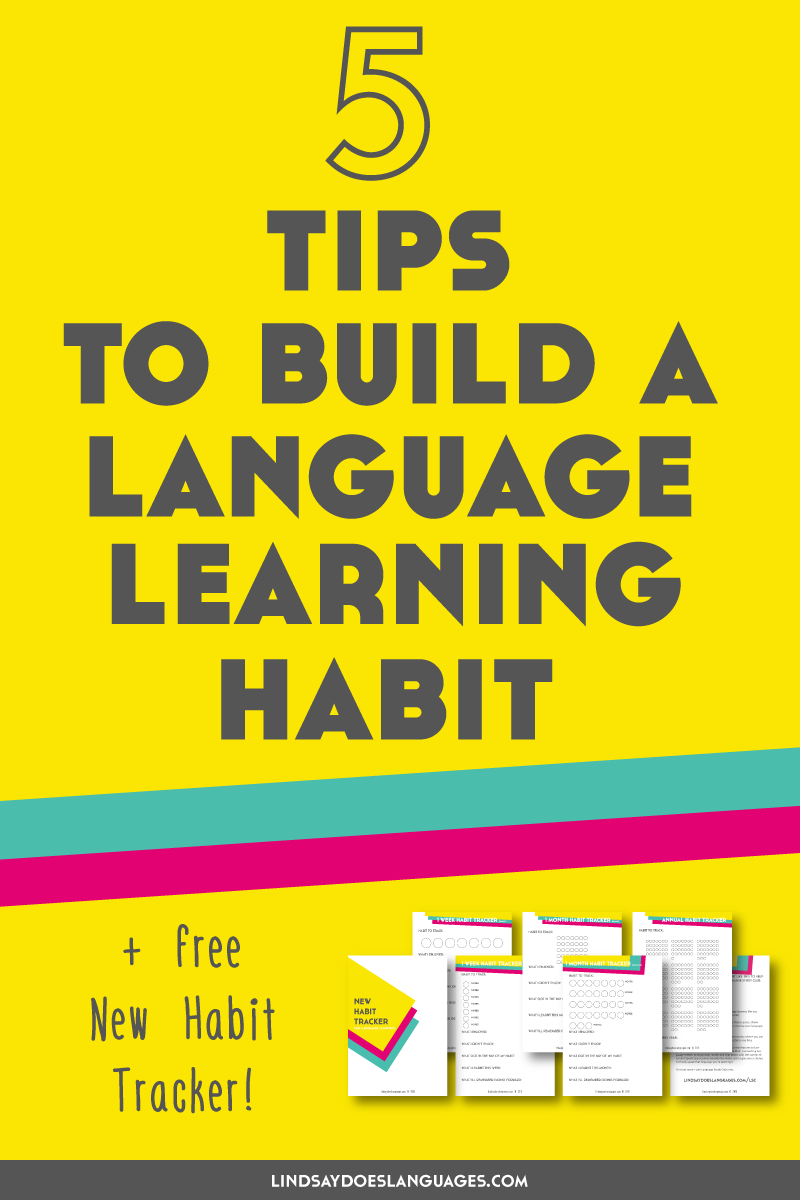December 4th, 2018
5 Tips to Build a Language Learning Habit
Ever tried to start a new language learning habit but a few days down the line fallen out of it? It may seem impossible at first but you do have the time to create a language learning habit and learn a little language each day.

Start small
When you’re trying to create a new habit, you need to start with something small.
If you try and dive right in and change everything all at once, it’s gonna be a lot and chances are it’ll fail. It’s the reason why so many new year’s resolutions don’t work out. We get too overexcited and try to change too much at once.
Instead, keep it simple and focus on adding or changing one small thing for your language learning. That way it can become a regular habit much more easily than something big.
Examples include:
Fitting in a quick Clozemaster session at breakfast –
Starting your day with a little language learning is a great way to make sure something happens. This is handy in case the day at work gets busy and your time becomes a little derailed. If you’ve started right, at least you’ve done something. Make it something like Clozemaster so it’s really easy and accessible change.
Reading (or reading a bit of) Wikipedia articles on your phone in the language you’re learning when you’re queuing in the coffee shop/supermarket/bank etc –
What do you do when you’re queuing? Get your phone out and scroll Facebook/Instagram/Twitter/emails?
Switch up your habit and scroll Wikipedia or webpages in the language you’re learning instead. It’s a small change that can help to give you some more easy contact time with the language.
Changing what you listen to in the car on your commute –
You start driving. The radio’s on. Minutes later? You’re pushing all the buttons to try and find something anything that you actually want to listen to. Sound familiar?
Set yourself up some playlists of podcasts, audio courses or music in the language you’re learning so that you’re using your commute effectively.
Writing one sentence in the language you’re learning when you wake up or just before you go to sleep –
Another way to get some easy language in right as you wake up. Or, use this same technique just before your go to sleep at night. A great little habit that can help to start and/or end the day right without the need for technology.
Track it
Better habits happen when we can see we’re doing them, when we have “evidence” so to speak. This is why Duolingo, Memrise and co have a streaks feature.
But of course, not everything you’ll want to use to learn that language will have a streaks feature built in. So create your own method of tracking.
There’s really easy options where you can just colour the dot, or there’s the more advanced versions where you can track what you actually do and how it went too.
However you choose to do it, tracking your language learning habit, even in the simplest way, will help you to see any familiar patterns in days you don’t do your habit. This means you can work to change things to make it possible.
Stack it
Chances are you already have some habits that happen each day, even if you don’t realise it. We all wash, brush our teeth, make food, eat food, wake up, and go to bed. At least!
By attaching your new language habit to an existing one, you’re taking out half of the work of creating a new habit.
The time is already carved out in your day. It happens already. You’re just adding something to it to make it more useful.
There’s two ways to look at this.
Number 1: habit pile. Like Jenga. Habit Jenga.
Number 2: habit chain. Like that Diana Ross song. Habit Chain Reaction.
Habit Jenga means doing your new language habit at the same time as something else you already do. I’ve already shared some examples of this above such as listening to a language podcast or music while you’re driving. Most of these new language habits are likely to be passive ones like listening, watching and reading stuff.
You could also:
Watch a YouTube video while brushing your teeth –
I try and do this everyday. My tip here is to hit the search button and type in “Easy Languages” if you find yourself scrolling the main feed to help avoid temptation and keep on track with your language habit.
Watch a Netflix show while washing up –
Again here, to avoid temptation of watching something else, it might help to create a separate profile (for free) for language learning.
Listen to a language podcast when getting dressed –
Use the same podcast feed everyday to make this one as simple as possible.
Listen to language news podcasts while working/commuting –
Subscribe and line them up before you start to drive so you’re good to go for the whole journey.
Switch the book you read during your regular reading time to a parallel text –
The key here is that it needs to be as enjoyable as the book you’d otherwise be reading. For this to really work, you need to be able to read enough in the language you’re learning or be relaxed enough about not understanding. You don’t want to be reaching for the dictionary every second word.
Habit Chain Reaction (totally a trademark) on the other hand is more about doing a new habit when an existing one happens.
Use the sentence structure “When…then I do…” to help you here. For example…
When I get in from work and as soon as I take my shoes off, I head to the kitchen table and do a chapter from my study book.
Or when I run a bath, I go and write 5 sentences in my notebook while the water is running. (or less sentences if you’re new to the language…we don’t want any floods)
Be prepared
You want your new language habit to be as easy as possible to achieve. Help yourself out by being prepared for it.
If your new habit is to write a sentence before going to bed or on waking up, then put your notebook and pen in the bedroom, ideally by your bedside.
If your new habit is to do a Memrise session on the bus/train to work, then make sure the course is downloaded so that you can still do it if the internet signal goes – especially applicable if you ride the underground to work!
You might not realise right away what being prepared for your new habit looks like, but as time goes on, you’ll begin to realise your common stumbling blocks.
When those stumbling blocks are that “my books were hidden under a pile of laundry” or “my laptop was in the other room”, then you’ll begin to see the small changes you can make that will make a difference.
Review it
Once you’ve used the free habit tracker for as long as you’d like to try it for, take some time to review what you’ve achieved.
Ask yourself honestly what went well and what could be improved. By looking back, you’ll be able to make the right changes looking forward so that you can do more and do it better.
Reviewing your progress is a common thing for people to ignore but it can really make a difference when we check in and adjust along the way.






